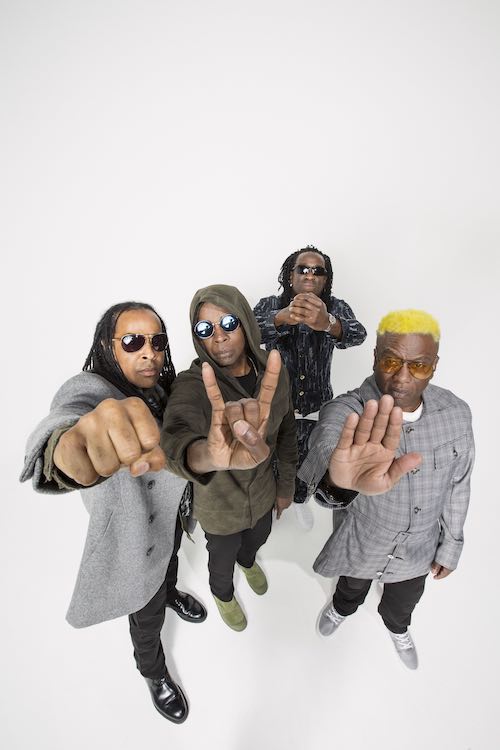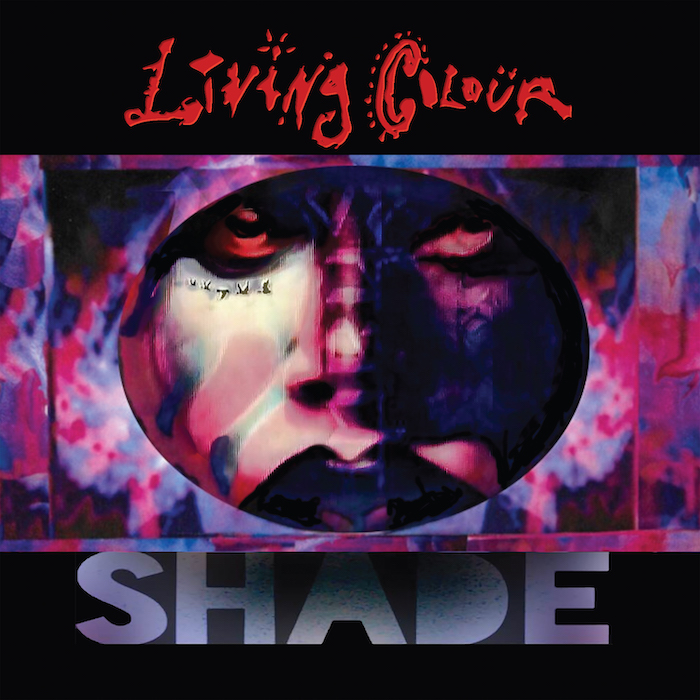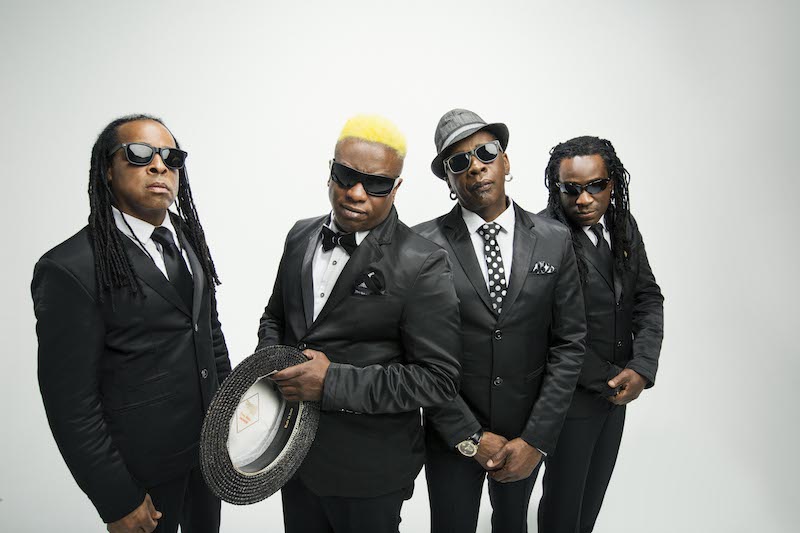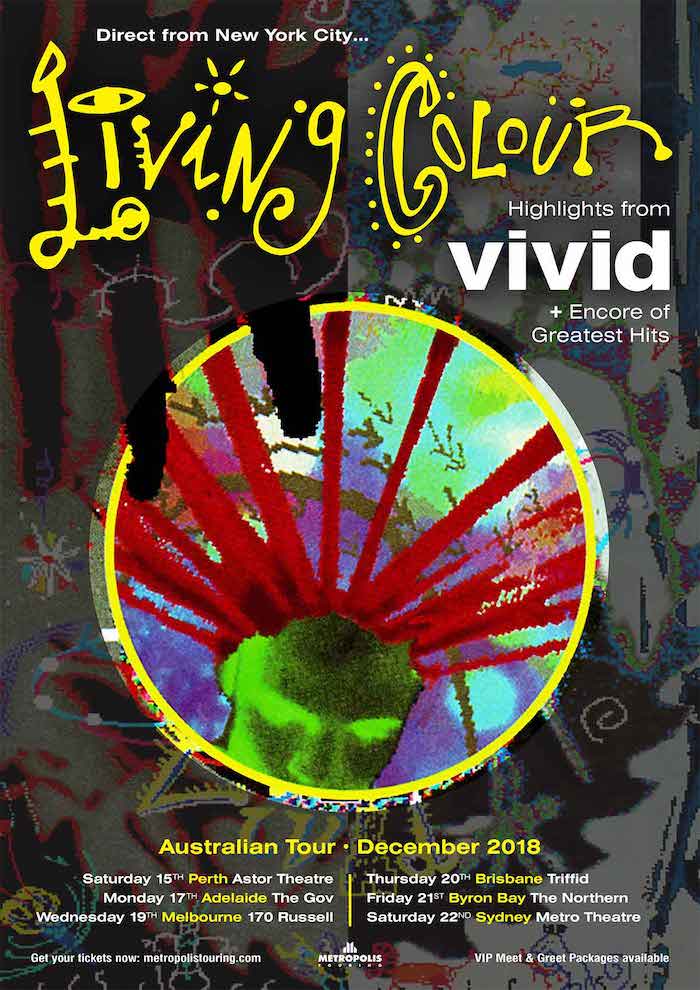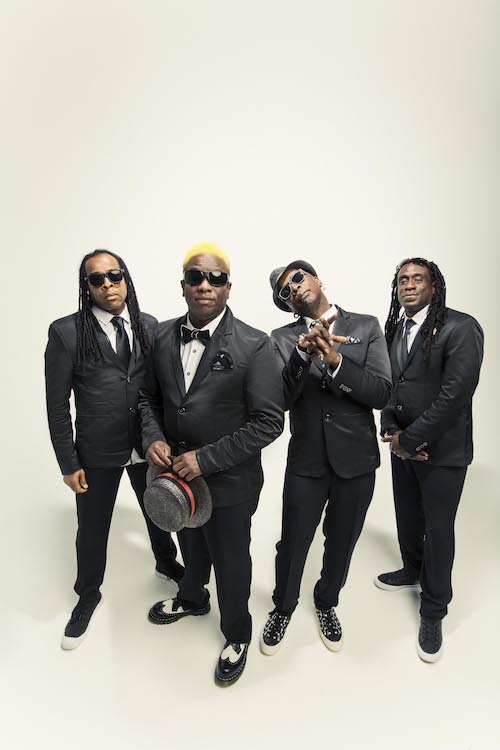Project Description
Interview with
WILL CALHOUN
from
LIVING COLOUR
Interviewer – Benjamin Smith
.
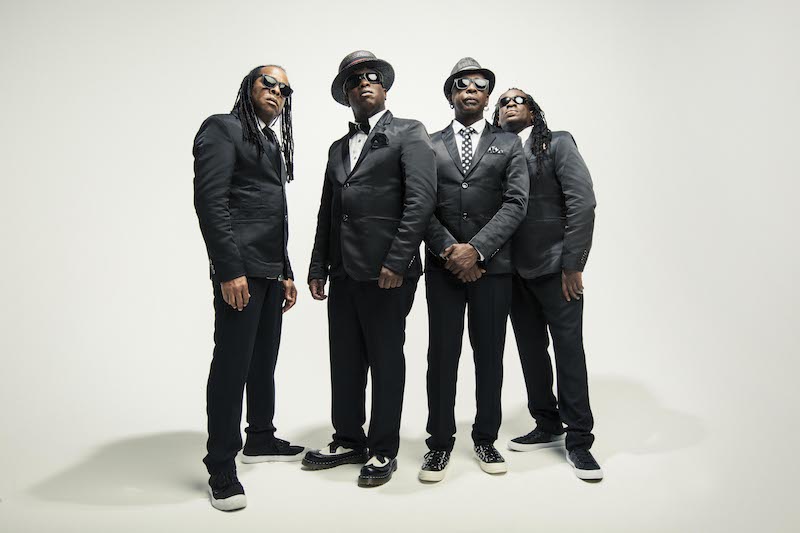
.
We took some time to speak to Will Calhoun, drummer for the groundbreaking act Living Colour on the eve of their Australian tour celebrating 30 years of the band’s music and the release of the revolutionary album Vivid.
.
.
BS: Will, thanks for taking some time to talk to us, I know you must be busy gearing up for the tour. How are the preparations coming along?
WC: Its great, we’re looking forward to coming down.
BS: This tour is feted as the 30thanniversary of Vivid. What do you bring to those songs and what do you take form them now, with an extra 30 years of living under your belt?
WC: Well when you first write a song you’re thinking about singing and dancing. But over time, its not just a song anymore. This band has been through enough things that its part of our life and all of the broken hearts. Here in America a lot of those songs still have relevance. What I bring now though is the experience and all the things that I’ve learned away from the band, with the band, with other musicians, on those trips to Africa. There’s some interesting ways of playing those songs. There’s a different sound, feel, concept.
BS: I also wondered whether as well as the Vivid stuff you’d be playing from some of the newer records, including the latest one, Shade?
WC: Yes. Its not a Shade tour in terms of the songs, however we are going to play a good mix of songs from Shade and Stain and Collideoscope. In terms of the format if you want to look at it that way it’ll be Vivid on one side and Shade on the other with a combination of material from other albums in the middle. And some covers too.
.
.
BS: When you say covers will it be covers from the records, like “Who Shot Ya” and the Robert Johnson numbers?
WC: We’re huge fans of Bowie and we lost Bowie and Prince lost a few jazz musicians as well, so it depends on the mood. Sometimes we might do a cover of a Bad Brains song. Sometimes we choose the sounds according to the vibe of the audience. If there’s a thrashier feel we’ll do Bad Brains. The covers will be some from our records and others depending on the night.
BS: In terms of thrashier vibes and different feels, to me it seemed like shade was a record where some of that thrashier edge of the Living Colour sound came to the fore and some of the more funk-based stuff was downplayed. Was that a conscious decision or did it just evolve that way more organically?
WC: It came out that way. Records take on their lives. We normally start out with about 25 songs and try to narrow it down to maybe 18 or 19 and you see what works and what doesn’t work, the time and the place and what’s the message of the song. There’s no crystal intention to create a harder record the record just kind of finds itself, if you’re honest with yourself and the music and honest with what you’re trying to say.
BS: I also wanted to ask about some of that tensionthat comes in bringing a record together. As artists all the members of Living Colour all have different styles and influences and have created different paths outside of the band. How do you go about synthesising that into something coherent?
WC: When it comes to a song I have an idea of what I want it to sound like, you know with the chords and the melodies. But you have to realise once the guys get their hands on it, its going to change. Not necessarily negatively but it may even become a new song. With this band and with everyone’s vocabulary and expertise I think its best to just toss it on to the fire and see what comes out. And that’s what happens. Some songs when they come out, they’re already written, and we just put our stamp on them. Other times we have to put it in to the test tube and shake it around. I trust my band members to pick apart an idea of mine, firstly by playing it how I’m hearing it and then by picking it apart and making it their own. Sometimes by making it your own you crate something new. Everyone respectfully takes a chord or a melody or a pattern as the composer wishes but eventually, we put our own stamp on our parts and maybe you walk out of that rehearsal like ‘hey, I wasn’t thinking that but that’s not bad”. But there are those songs that are obvious, the songs already there. There’s no need to play around with it, you just play the part but you speed it up or slow it down but the ingredients are already there.
.
.
BS: I also wondered, I know many of the members of Living Colour have projects outside the band. And you yourself have done many other things. How do you go about the process of deciding, when you have an idea, whether it will be a Living Colour record or one for another vehicle?
WC: It’s a combination of things, but you don’t know until you try it. There are songs that we’ve tried to play that have just haven’t become ‘Living Colour’ songs, not everything does. It has happened that certain ideas don’t make it as a Living Colour song; it doesn’t fit in to our usual thing, but sometimes you have to play it. A song like Bless Those (from 2009’s The Chair in the Doorway), you know Doug brought that sound in and all we had to do was microwave it because the meal was already there all we had to do was heat it up. The parts, the melody, the groove, was already kind of there when he showed it to us and everybody just added hints of their own personality and Living Colour is a great band like that. Sometimes you just add water and a song comes out. Sometimes its just fine the way it is. But we have to try both things to see what works best for the music because we won’t know until we pull it and bend it and stretch it whether it is a Living Colour song or not. We try different intros and outros and that’s the fun thing about this band we go through a pretty serious deconstruction period, you know we ask do we need this note, this word or whatever. It is a beautiful challenge when you have this group of talented guys who push you and say things like ‘are you sure you want to do this on your solo?’. It’s all a matter of construction and deconstruction. And sometimes the live version will be completely different from the studio version. Like a song like Walls, it is what it is but we find variations like a longer intro or outro that’s what Living Colour does.
BS: Living Colour was, and is, such a completely revolutionary band. When it began and when things started to happen for you as a band there were a lot of extraordinary risks and chances being taken with the music. It seems to me that now music, rock n roll music especially, is a pretty safe place to be and there aren’t a lot of dangerous ideas emerging, either onstage or in the records. There aren’t a lot of people pushing those kinds of boundaries. Do you ever get the sense that, in an environment like that, were Living Colour starting out today the band might struggle to find an audience and a record company that would be prepared to take those kinds of chances and gamble on thos kinds of creative unknowns?
WC: I think it would be pretty challenging now. Its pretty different. We had a lot of things on our side when we came out, like MTV. We had a lot of rock n roll bands who were around, so we had great competition and great colleagues which made the entire genre expand and become noticeable. But to be specific we had support from The Rolling Stones, then we did the MTV piece and then we had Rolling Stone magazine. There were things that helped the band creatively to become the Living Colour we did. I think coming out with a new record now, it’s just a different ball game. There aren’t record stores. We used to do in-stores, where you would go to a store that was selling your recording and sign autographs and meet people. I kind of miss some of that side of the industry. Coming to Australia for example we had regional reps. So we had a rep from Melbourne a rep from Sydney; you would arrive at that city and the rep would meet you at the airport and they’d say ‘ok, in my town these four radio stations play the record’ and you stop by and meet and greet. It was a different time than now where we have social media and you don’t have to have a record company at all. You could still have a million people watching and you just get a five percent booking agent to put you in a room. Charting really isn’t a situation now. Technology has changed all that. It is different, but would we be able to find our audiences? I’m going to say yes, maybe even a bit quicker because you can focus more on people by attaching yourself to certain media to make yourself visible in one arena more than another. But I like the good old-fashioned way of shocking people; having people not know what it is that you’re going to do, not recognising the band. That concept of experiencing music that way rather than somebody sending it to you in a file.
.
.
BS: Going back to before, you were talking about the song Walls. I wondered whether a song like that, or any song for that matter, produces different reactions in audiences depending where they are? A song like Walls, with all the baggage the word carries now in the United States, is it received differently there than it might be here or in Europe?
WC: the answer to that is a resounding yes. Radio stations choose to play what they think is going to do well in that region. But in the end people are people and if someone likes a song… for example a song like Glamour Boys it is what it is. I lived in Australia for a bout a year and I really liked being there, it’s a different tempo and vibe in Australia than it is in the ‘States. In America you have to understand that the audience really took to Cult of Personality but the record company thought that that was a song that should not be used as a single and that’s my point, whereas the label was not interested in putting that forward, you know the introduction was a little bit quirky and weird the guitar solo was a bit unusual. It wasn’t a song like Middle Man or other songs that might have been a bit safer to use, but you never know what people will like, a number one song in England could be a football rant because that’s what people like. We take it as it comes and we certainly appreciate all the support from the fans in Australia, but the defining spirit of Living Colour definitely reverberates differently in different territories. For us when we mention people like Malcolm X and Dr King and there is an American sort of angle on those people and it is different from the Australian angle or the French angle, so for us we were telling our version of that story, of those leaders and what they mean and how the impacted on our lives and our parents lives and our grandparents lives and that may not be the same for Australians. All you can do is put your art out there and let it take its own course.
BS: What might audiences who’ve seen you before expect to see on this tour that might be different from past shows?
WC: Well certainly were going to play much more of Shade and also, like bookends, were going to pay much more of Vivid. Its not an anniversary of 30 years of Vivid so much as it is 30 years of Living Colour being a band so you’re going to see much more variation of other recordings its going to be a wider variety. The audience will see a couple of the standard things but we also like to come up with a couple more unusual things, This Is The Life, maybe, Elvis is Dead, Under Cover of Darkness and a few other things that we didn’t play last time as a way to thank the fans for supporting us all for all this time over the years.
.
.
LIVING COLOUR
Australian Tour Dates
December 2018
Saturday 15th – Perth – Astor Theatre
Monday 17th – Adelaide – The Gov
Wednesday 19th – Melbourne – 170 Russell
Thursday 20th – Brisbane – Triffid
Friday 21st – Byron Bay – The Northern
Saturday 22nd – Sydney – Metro Theatre
.
TICKETS
.
.
.



